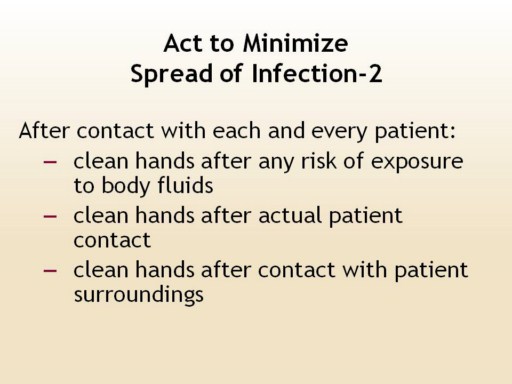| front |1 |2 |3 |4 |5 |6 |7 |8 |9 |10 |11 |12 |13 |14 |15 |16 |17 |18 |19 |20 |21 |22 |23 |24 | 25|26 |27 |28 |29 |30 |31 |32 |33 |34 |35 |36 |37 |38 |39 |review |
 |
After contact with each and every patient a student should clean hands after any risk of exposure to body fluids. Students should habitually clean their hands immediately after an exposure risk to body fluids and after glove removal. Cases of transmission have been to know to occur even with gloving. This is essential to limit the opportunity of the student receiving an infection. It is also necessary to maintain a safe health-care environment.
Students should wash hands after actual patient contact. All students should clean their hands after touching a patient and his or her immediate surroundings. This should be done using one of the methods available to the clinic or hospital immediately after the patient contact is over. This is because in busy environments there are many distractions and busy people tend to rush onto the next job or patient. Many people forget in the rush to wash their hands. Forgetting to wash hands can lead to the student getting an infection and increasing the chances of the microorganisms spreading throughout the environment. Saying goodbye to the patient by shaking a hand or touching a shoulder provides opportunities for micro-organisms to be transferred to the student and vice versa. Activities in addition to those mentioned above that involve direct physical contact include helping a patient to move around, to get washed or to give a massage, which are known routes for micro-organisms spreading to others. Students performing clinical examination such as taking pulse, blood pressure, chest auscultation and abdominal palpation are all opportunities for cross-infection.
Students must handwash after contact with patient surroundings Micro-organisms are also known to survive on inanimate objects. So it is important to clean oneís hands after touching any object or furniture in the patientís immediate surroundings when leaving them, even without touching the patient. Students may find themselves helping other staff and change bed linen, adjust perfusion speed, monitor an alarm, hold a bed rail or make room on a side bed table for a patient. |